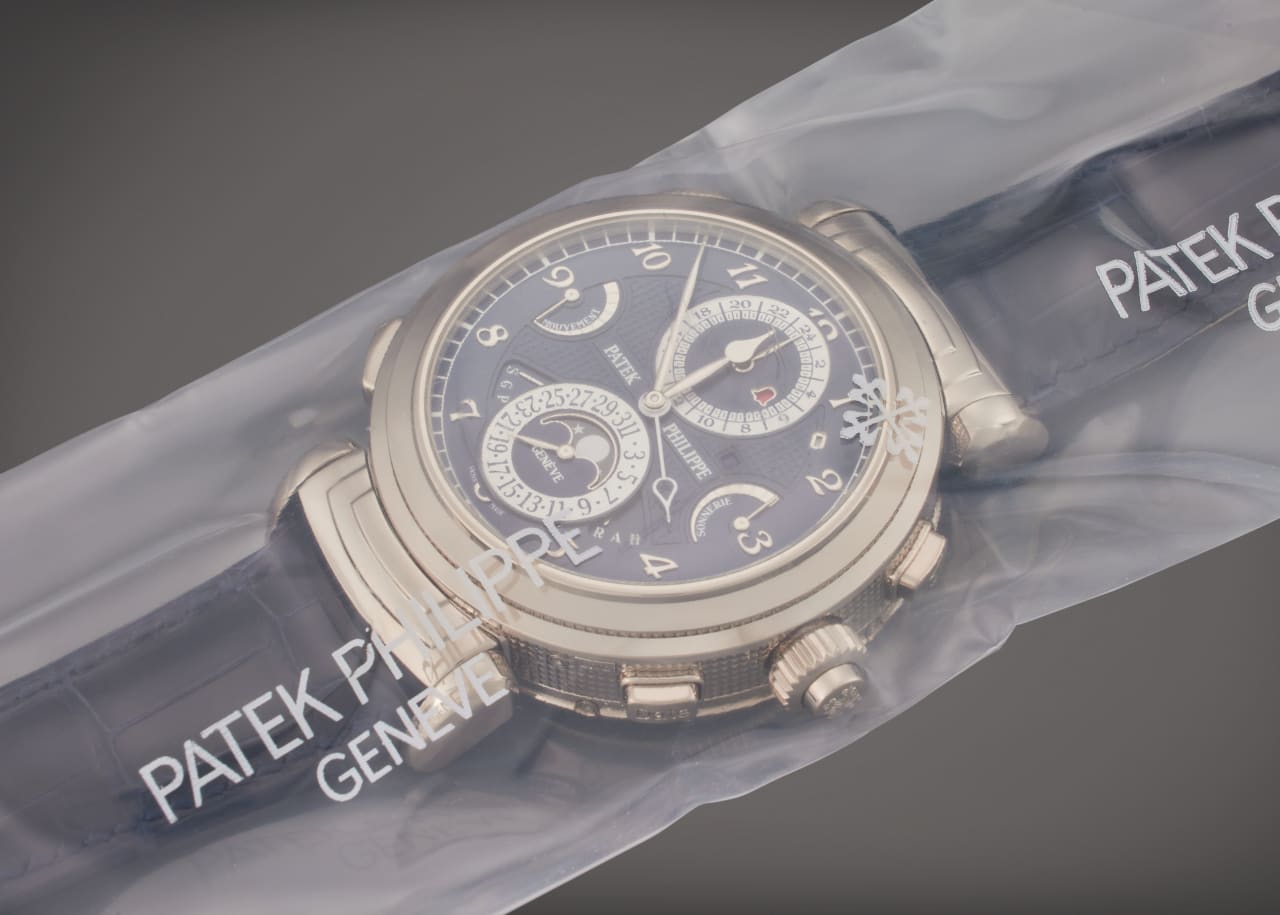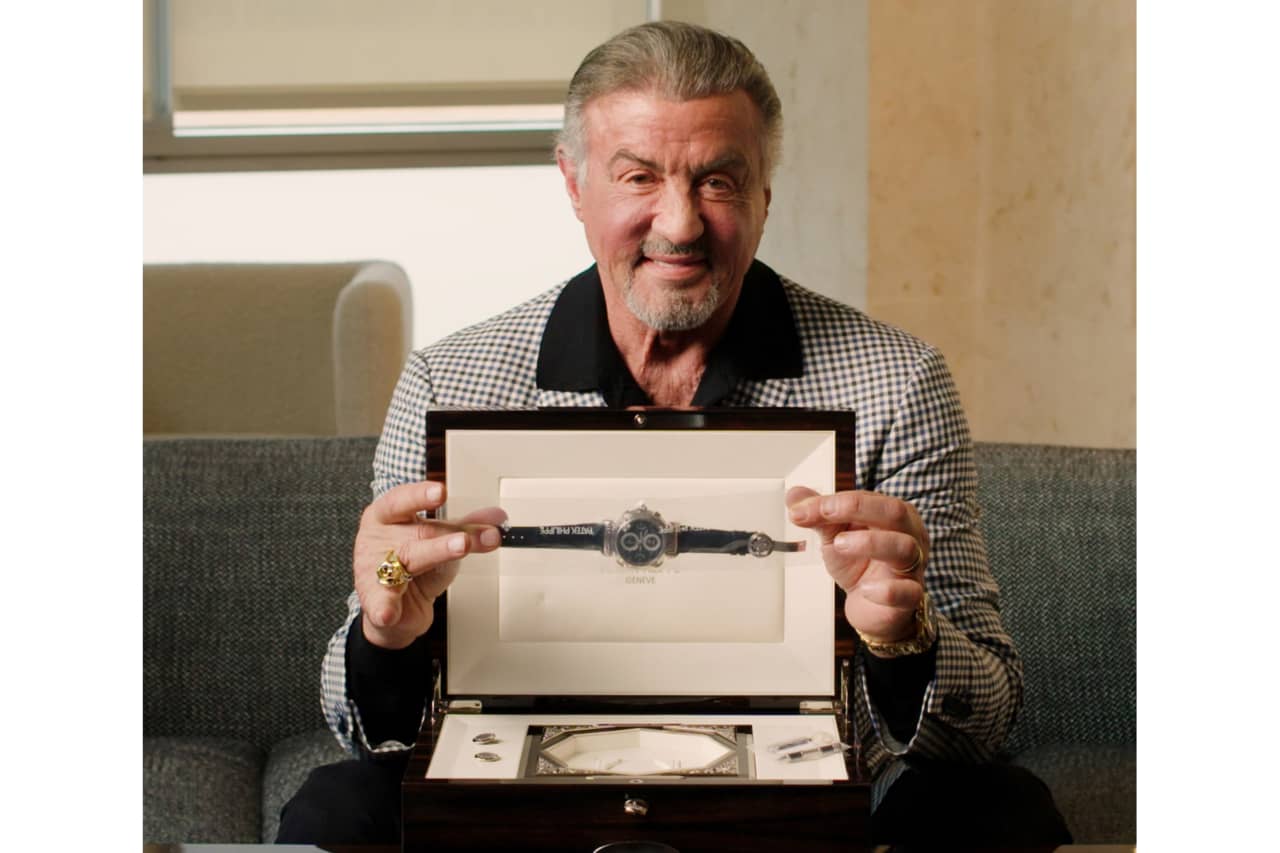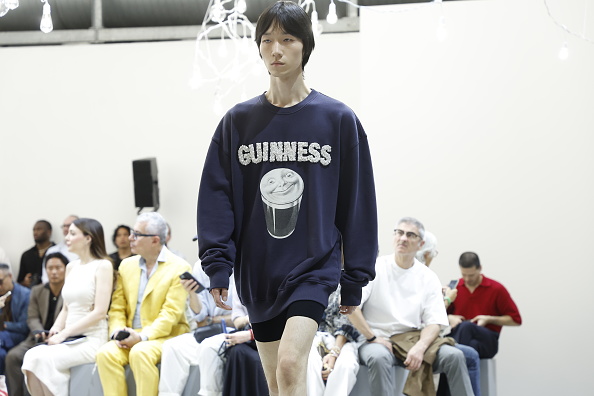Sylvester Stallone Sells His Knockout Watch Collection, Including the Most Valuable Modern Timepiece Sold in Sotheby’s History
Sylvester Stallone’s legacy as one of the most notable watch collectors of the 21st century was cemented in New York this week, as 11 of the actor’s timepieces sold for US$6.7 million—beating its presale estimate—at Sotheby’s.
The highlight of the sale was the Academy Award winner’s Patek Philippe Grandmaster Chime, which sold for US$5.4 million (surpassing its pre-sale estimate of US$2.5 million to US$5 million), a result that set a pair of benchmarks for the auctioneer. It’s the third-most valuable wristwatch sold in Sotheby’s history, and marks a record for a modern watch sold by Sotheby’s, topping the US$4.5 million sale of a Richard Mille Reference RM53-02 last October.
“The sale of the Patek Philippe Grandmaster Chime was an unrepeatable celebration, not only of a masterpiece by the most revered Swiss-watchmakers of technical excellence, but also of the legendary icon that is Sylvester Stallone, who has been a deeply influential and admired collector for many decades,” Geoff Hess, Sotheby’s head of watches, Americas, said in a statement.
On Wednesday, more than 100 attendees filled Sotheby’s saleroom, and once the Grandmaster Chime (Reference 6300G-010) hit the block, a four-minute bidding war ensued among five bidders, according to the auction house. In the end, the watch was sold to a private collector from Asia. ( Stallone paid US$2.2 million for the watch in 2021. )

Sotheby’s
“To feel the pulse of collectors racing with excitement in pursuit of absolute top-caliber material was tremendous, and an homage to the art of collecting at the highest level,” Hess said.
Considered to be a holy grail among followers of haute horology, the Grandmaster Chime was the result of a project initiated by Philippe Stern in 2007 to create the most intricate wristwatch in the brand’s history. The development, production, and assembly spanned 100,000 hours, according to Sotheby’s.
Stallone’s Grandmaster Chime was the first example of the model to appear at auction, aside from one specifically created for, and sold at, a Christie’s charity auction in November 2019 for CHF 31 million (US$35 million) . It remains the highest price for a watch ever sold at auction.
Hess himself went home with one of Stallone’s watches, as the winner of a five-minute bidding battle for the actor’s olive green Patek Philippe Nautilus. The 2021 stainless steel watch featuring an olive-green dial and diamond-set bezel sold for US$492,000, exceeding its pre-sale estimate of US$400,000.

Sotheby’s
Stallone’s collection, assembled over the course of more than 20 years, also included timepieces from Rolex, Audemars Piguet, and Piaget, as well as unique and screen-worn watches from Panerai.
Other highlights included the actor’s Audemars Piguet Royal Oak Tourbillon (Reference 26730OR.OO.1320OR.01)—a gorgeous piece created for the 50th anniversary of the Swiss watchmaker’s Royal Oak collection in 2022. It sold for US$228,000, exceeding its pre-sale high estimate of US$200,000; and a Panerai Luminor Submersible (Reference PAM00382) worn by Stallone in the 2012 film The Expendables 2 that sold to an online buyer for US$96,000, blowing past its pre-sale estimate of US$30,000 to US$60,000.
“I enjoy the collecting process like so many others in this passionate community, who don’t just see watches as an accessory, but admire them for their history, craftsmanship, artistry—but most importantly—how they make them feel,” Stallone said in a statement when the sale was announced. “Looking at these watches, I feel truly lucky to have owned them; they serve as a reminder that hard work pays off.”
 Copyright 2020, Dow Jones & Company, Inc. All Rights Reserved Worldwide. LEARN MORE
Copyright 2020, Dow Jones & Company, Inc. All Rights Reserved Worldwide. LEARN MORE
This stylish family home combines a classic palette and finishes with a flexible floorplan
Just 55 minutes from Sydney, make this your creative getaway located in the majestic Hawkesbury region.
Continued stagflation and cost of living pressures are causing couples to think twice about starting a family, new data has revealed, with long term impacts expected
Australia is in the midst of a ‘baby recession’ with preliminary estimates showing the number of births in 2023 fell by more than four percent to the lowest level since 2006, according to KPMG. The consultancy firm says this reflects the impact of cost-of-living pressures on the feasibility of younger Australians starting a family.
KPMG estimates that 289,100 babies were born in 2023. This compares to 300,684 babies in 2022 and 309,996 in 2021, according to the Australian Bureau of Statistics (ABS). KPMG urban economist Terry Rawnsley said weak economic growth often leads to a reduced number of births. In 2023, ABS data shows gross domestic product (GDP) fell to 1.5 percent. Despite the population growing by 2.5 percent in 2023, GDP on a per capita basis went into negative territory, down one percent over the 12 months.
“Birth rates provide insight into long-term population growth as well as the current confidence of Australian families,” said Mr Rawnsley. “We haven’t seen such a sharp drop in births in Australia since the period of economic stagflation in the 1970s, which coincided with the initial widespread adoption of the contraceptive pill.”
Mr Rawnsley said many Australian couples delayed starting a family while the pandemic played out in 2020. The number of births fell from 305,832 in 2019 to 294,369 in 2020. Then in 2021, strong employment and vast amounts of stimulus money, along with high household savings due to lockdowns, gave couples better financial means to have a baby. This led to a rebound in births.
However, the re-opening of the global economy in 2022 led to soaring inflation. By the start of 2023, the Australian consumer price index (CPI) had risen to its highest level since 1990 at 7.8 percent per annum. By that stage, the Reserve Bank had already commenced an aggressive rate-hiking strategy to fight inflation and had raised the cash rate every month between May and December 2022.
Five more rate hikes during 2023 put further pressure on couples with mortgages and put the brakes on family formation. “This combination of the pandemic and rapid economic changes explains the spike and subsequent sharp decline in birth rates we have observed over the past four years,” Mr Rawnsley said.
The impact of high costs of living on couples’ decision to have a baby is highlighted in births data for the capital cities. KPMG estimates there were 60,860 births in Sydney in 2023, down 8.6 percent from 2019. There were 56,270 births in Melbourne, down 7.3 percent. In Perth, there were 25,020 births, down 6 percent, while in Brisbane there were 30,250 births, down 4.3 percent. Canberra was the only capital city where there was no fall in the number of births in 2023 compared to 2019.
“CPI growth in Canberra has been slightly subdued compared to that in other major cities, and the economic outlook has remained strong,” Mr Rawnsley said. “This means families have not been hurting as much as those in other capital cities, and in turn, we’ve seen a stabilisation of births in the ACT.”
This stylish family home combines a classic palette and finishes with a flexible floorplan
Just 55 minutes from Sydney, make this your creative getaway located in the majestic Hawkesbury region.






















